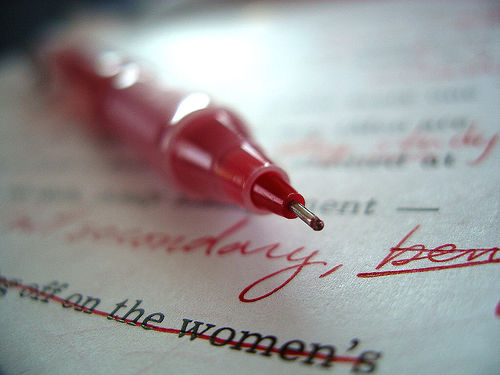Backstory - Part One
One thing editors and reviewers love to pounce on is "back story," that section in a book that explains how things came to be that way, or why a character is where she is. "Backstory!" we shout gleefully, as we wave a manuscript under the poor, bewildered writer's nose. "Must get rid of that backstory!"
However, books do need a certain amount of explanation. Readers like to know the wheres and whys, but they don't like to read a long, text-heavy lecture that explains them.
For example, let's say you (the reader) have just picked up a book about Rose. I (the writer) want to make you understand what Rose is all about. So I include a few paragraphs filled with many, many uses of the past participle. Bored already just reading the words past participle, aren't you, you poor reader you.
Traditional Backstory:
Rose had decided to rebuild her life after her divorce. Her first husband had left her and their children penniless, and he refused to pay child support. Whenever she had made formal requests for payment, he had tracked her down and threatened her. She remembered how he had hit her, and as he left, he had told her that the children were next.
Now, this is pretty interesting action, but it is presented in a really dry, dusty way. Several more paragraphs of this and the reader will skim forward.
More than that, if they are looking at your Kindle or Nook sample online, they might decide to move their business elsewhere.
I am convinced that backstory is necessary, and that there is a creative, vibrant way to express it. In other words, writers can excite and inform at the same time.
Let's try a rewrite of that paragraph, but in a completely different way.
New, Improved Backstory:
Rose sat by the window. She crossed her arms and winced. The bruise was still fresh from David's last visit.
"Mum? Can I have my allowance?" Maeve entered the room. There was a rip on the knee of the girl's jeans.
"I'm sorry, love. I just can't afford it at the present."
It hurt to admit that, but the thought of what David would to do to her and, worse, to Maeve, if he returned was more painful.
Now the writer does several things at once. She makes the reader understand Rose's desperation, and she creates a magic picture of where Rose is, what her child is like, and where they are physically. The rewrite won't win any awards, but it's much more interesting than that first word brick.
Advanced Backstory - The Second Book in a Series
As an author of a series, it's even more imperative to get information about my characters out there. Someone may pick up my second book without having read the first. I could include a long "The Story Thus Far" section, but who ever reads those?
It would be better to bring the reader onboard with a few letters, a conversation, perhaps a cat walking among a pile of photographs. That requires much more dexterity but delivers far more interest.
Don't hate on the backstory. Seize it as a chance to serve up a fascinating chunk of detail about your beloved characters to those who make your writing possible: the readers.



4 comments:
I think you nailed it. Backstory can be a great thing, even a necessary thing, but it needs to be in the back. It needs to be part of a scene, not the whole show.
I read two novels recently that offered up a lot of backstory. One read like a textbook, the other pulled me into a world that felt as real as this one.
The difference between them was just as you describe above.
As always you have such a good point. Showing the backstory is where the art of writing comes into play! It is so easy to tell it, and we all slip into that mode when writing the 1st draft. Having the impartial eye of the editor to help us see those places is invaluable!
I never really considered the diverse ways to present the "story so far" until recently. Bulk text is always off putting and I must say my editor made me think through great alternates ;-)
Post a Comment